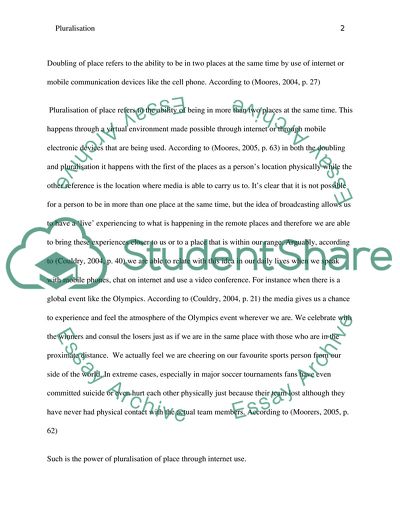Cite this document
(Pluralisation of Place in Connections to Mobile Phone and Internet Use Research Paper, n.d.)
Pluralisation of Place in Connections to Mobile Phone and Internet Use Research Paper. Retrieved from https://studentshare.org/media/1780497-critically-explore-the-notion-of-the-doubling-or-pluralisation-of-place-with-reference-to-mobile-phone-and-internet-use-and-their-place-in-everyday-life
Pluralisation of Place in Connections to Mobile Phone and Internet Use Research Paper. Retrieved from https://studentshare.org/media/1780497-critically-explore-the-notion-of-the-doubling-or-pluralisation-of-place-with-reference-to-mobile-phone-and-internet-use-and-their-place-in-everyday-life
(Pluralisation of Place in Connections to Mobile Phone and Internet Use Research Paper)
Pluralisation of Place in Connections to Mobile Phone and Internet Use Research Paper. https://studentshare.org/media/1780497-critically-explore-the-notion-of-the-doubling-or-pluralisation-of-place-with-reference-to-mobile-phone-and-internet-use-and-their-place-in-everyday-life.
Pluralisation of Place in Connections to Mobile Phone and Internet Use Research Paper. https://studentshare.org/media/1780497-critically-explore-the-notion-of-the-doubling-or-pluralisation-of-place-with-reference-to-mobile-phone-and-internet-use-and-their-place-in-everyday-life.
“Pluralisation of Place in Connections to Mobile Phone and Internet Use Research Paper”, n.d. https://studentshare.org/media/1780497-critically-explore-the-notion-of-the-doubling-or-pluralisation-of-place-with-reference-to-mobile-phone-and-internet-use-and-their-place-in-everyday-life.


